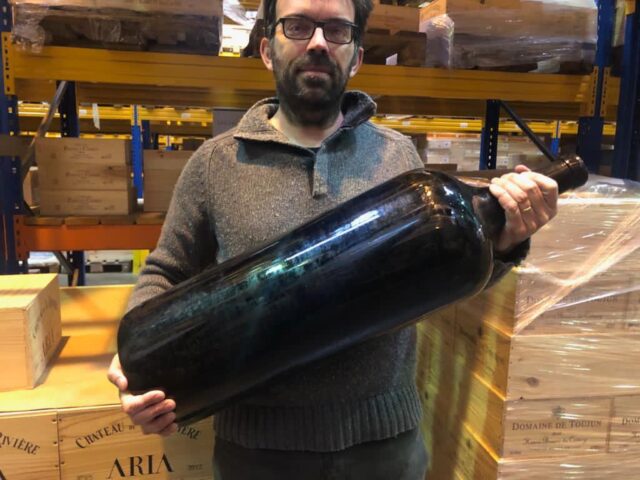18 litre bottle of ‘world’s most expensive wine’ sold
An 18 litre bottle of Liber Pater 2011, producer of the world’s most expensive wine, has been sold by wine investment firm Oeno to a private client for an undisclosed sum.

Oeno has been the exclusive UK partner for boutique Bordeaux producer Liber Pater since 2018. Run by Loïc Pasquet in the Graves appellation, Liber Pater has achieved cult status as one of the rarest and most sought-after wines on the market with a devoted, high-paying following.

The entire vineyard surface covers just 2.5ha, maxing out at around 1,200 bottles at most a year. Pasquet uses rare ancient grape varieties such as Castets, Tarney-Coulant and Pardotte, and farming methods, making distinct wines that taste like the claret made in 1855, when the region was originally demarcated and pre-phylloxera.
He plants his vineyards with an unusually high density and farms them with a mule. Since taking over the estate in 2005, Pasquet has released only six vintages – 2006, 2007, 2009, 2010, 2011 and 2015. No 2016 has been made and no 2017 either, the latter vintage being completely destroyed by frost.
When Pasquet bottled his 2011 vintage in 2015, he set aside enough for three 18 litre bottles. The idea was to keep two of them as gifts for his daughters when they came of age, and to sell one bottle to a collector, which he did soon after.
Oeno acquired one of the two remaining 18-liter bottles, which it recently sold to a private client for an undisclosed sum. The wine, pictured, has yet to be labelled.
Partner Content
The third bottle in existence is due to be offered at auction in 2022 with a reserve price of £210,000.
In September 2019, Pasquet released 240 bottles of his 2015 vintage at €30,000 (£26,400) per 75cl bottle, making it the world’s most expensive Bordeaux.
It is the first vintage released thus far made with the pre-Phylloxera varieties. The cuvée was vinified in clay vessels with a two-month maceration and then aged for a further two-and-a-half years. The wine did not see any oak.
The rare drop was released in batches of six to no more than 18 per export market. Just 550 bottles of the 2015 vintage were produced.




